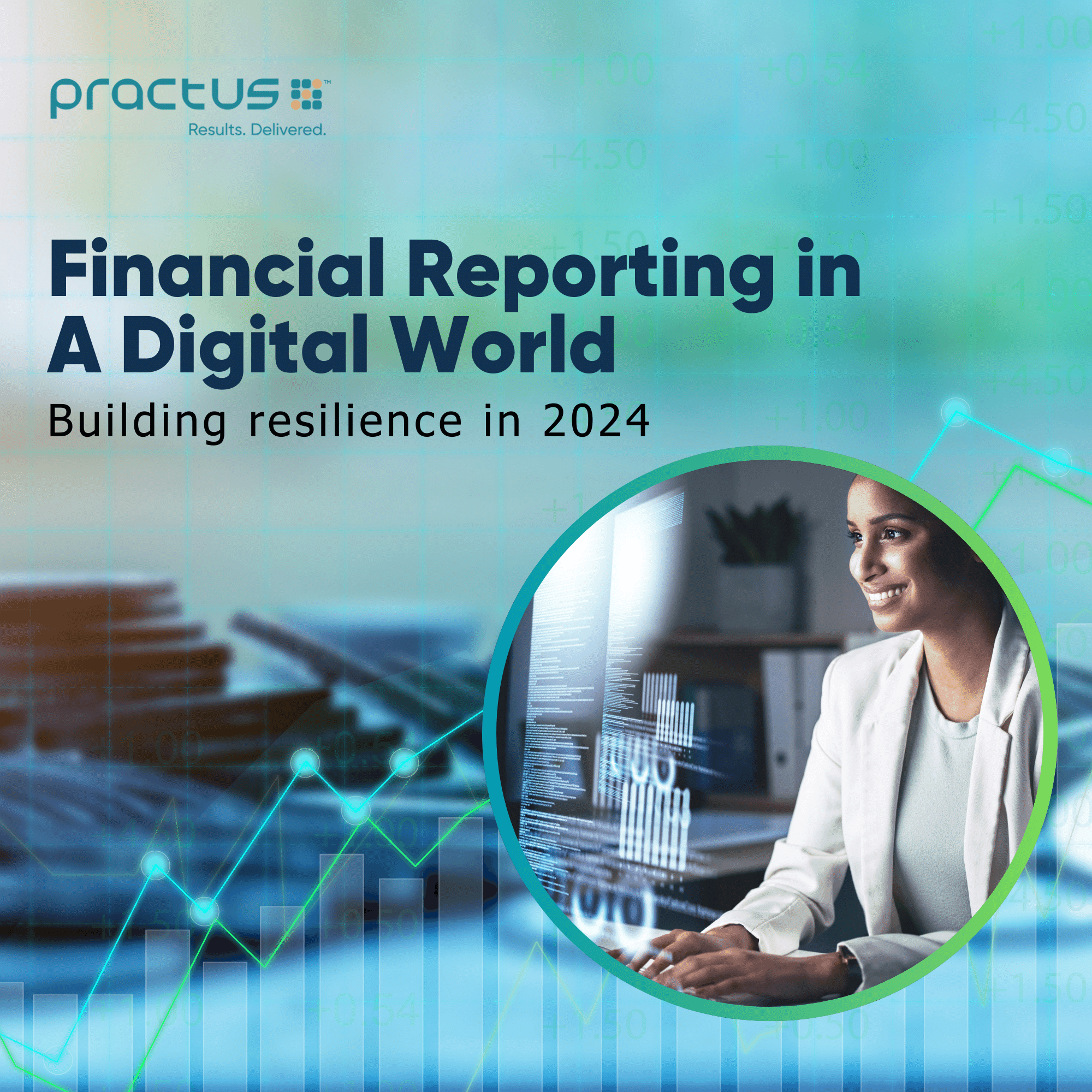
In the fast-paced world of finance, adaptability and resilience are paramount. As we enter the new financial year, the need for robust financial reporting systems has become more critical than ever. These systems serve as the backbone of organizations, providing timely insights and guiding strategic decisions. Let us explore the importance of building a resilient financial reporting system and discuss some key strategies and technologies that will help organizations achieve this goal.
A robust financial reporting system is more than just a collection of numbers; it is a strategic asset that empowers organizations to thrive in today’s data-driven landscape. By compiling raw financial data into comprehensive reports and visualizations, these systems offer invaluable insights into an organization’s performance and financial health.
With clear visibility into key metrics and trends, the leadership teams can make informed decisions about strategic planning, resource allocation, and investments in growth and expansion. Furthermore, reliable financial reports serve as early warning signs, enabling organizations to mitigate risks and seize opportunities before they escalate.
Revenue Recognition: The Impact of Data Analytics & AI
Why Do Organizations Need Strong Resilient Financial Systems?
In today’s volatile global landscape, characterized by geopolitical tensions, cyber threats, and the lingering effects of the pandemic, one cannot overstate the necessity for robust and resilient financial systems. These systems serve as the bedrock of economies, providing stability, facilitating transactions, and supporting growth across industries.
Strong and resilient financial systems play a multifaceted role in safeguarding both individual businesses and the broader economy. First, they function as a bulwark against external shocks and disruptions, ranging from natural disasters to market downturns. By maintaining stability and continuity in the face of such challenges, these systems mitigate adverse impacts on businesses, investors, and consumers alike.
Moreover, resilient financial systems contribute to overall confidence and trust in the economy, fostering investment, innovation, and economic growth. When businesses and individuals have faith in the stability and integrity of financial institutions and markets, they are more likely to engage in productive economic activities, driving prosperity and opportunity.
Additionally, the need for financial resilience has become increasingly evident in recent years. Events such as pandemics, wars, geopolitical risks, and supply chain disruptions have highlighted the importance of financial institutions’ ability to withstand and adapt to unforeseen challenges. Resilient financial systems are essential for ensuring the continuous flow of capital, liquidity, and essential services, even in the face of significant disruptions.
Furthermore, resilient financial systems are crucial for protecting against systemic risks and promoting long-term financial stability. By implementing robust risk management practices, maintaining adequate capital reserves, and fostering transparency and accountability, financial institutions can mitigate the likelihood and severity of financial crises, protecting businesses, investors, and consumers from widespread economic harm.
Strong and resilient financial systems are the bedrock of modern businesses and economies, providing stability, fostering growth, and safeguarding against unforeseen challenges. By investing in their strength and resilience, businesses, governments, and society as a whole can better navigate uncertainty and build a more prosperous and sustainable future.
The Role of AI in F&A Operations
Building Financial Resilience
Building resilience in the finance function requires a comprehensive approach that addresses various challenges and uncertainties. Key strategies include:
- Capital adequacy: Maintain sufficient capital reserves to withstand losses and remain solvent during economic downturns.
- Diversification: Spread investments and funds across markets and assets to reduce the impact of concentrated risks.
- Risk management: Implement robust risk management strategies to identify, assess, and mitigate potential dangers proactively.
- Liquidity management: Develop effective liquidity management strategies to safeguard financial resources amidst market instability.
- Contingency planning: Formulate premeditated protocols and strategies to address potential crises and minimize disruption and damage.
- Cybersecurity: Reinforce safeguards against cyber threats and violations of confidential financial data through robust cybersecurity protocols.
Best Practices for Building a Robust Financial Reporting System
Implementing a robust financial reporting system requires careful planning and execution. Here are some ways organizations can go about building their financial reporting systems:
- Align Objectives and KPIs with Business Goals
Start by establishing clear financial reporting objectives that directly connect to your organization’s overall goals.
Identify key performance indicators (KPIs) across various areas, such as profitability, cash flow, and operational efficiency. These KPIs will serve as benchmarks to effectively track and measure your financial performance. - Integrate your systems with accounting software
Invest in robust financial accounting software that seamlessly integrates with other business systems you use.
These tools should effectively capture, organize, and process financial data, minimizing manual errors and maintaining the integrity of your data. - Standardization of reporting formats
Establish standardized financial reporting formats to ensure consistency and clarity across your entire organization.
Implement templates for income statements, balance sheets, and cash flow reports. This will streamline reporting processes and make better decision-making more efficient. - Periodic audits are a must
Regularly schedule audits of your financial reporting processes, tools, and controls. These audits are essential to ensure accuracy, compliance with regulations, and identify any potential gaps or areas for improvement.
Internal or external audits can help your financial reporting system stay resilient and effective over time. - Consider outsourcing your CFO/F&A function:
Avail on-demand strategic guidance, from KPI design to data visualization, for a more mature reporting system designed and implemented by a team of experts.
Unlock financial performance, increase revenue, margins, and boost stakeholder confidence.
Do’s and Don’ts of ERP Implementation: A Client Perspective
Building Resilience with Industry 4.0 Technologies
Advanced technologies play a crucial role in building business financial resilience. AI, Big Data analytics, and cloud computing enable organizations to analyse vast data sets to identify risk patterns and predict potential hazards. They also help automate processes to improve response time, enhance decision-making efficiency, and implement secure and scalable infrastructure for remote access, disaster recovery, and data storage.
According to Deloitte’s “Business Reporting in a Digital World” 2024 report, three key trends are expected to transform how reporting is done:
- Intelligent reporting: AI will play a major role in reporting through machine learning, cognitive computing, and natural language processing. AI will improve the user experience by learning user preferences and automating some report generation tasks, including initial report drafts. AI will also make reports more insightful by using predictive analytics to anticipate future trends.
- Interactive reporting: Static reports will be replaced by interactive dashboards that users can access on their phones or tablets. Users will be able to drill down into the data and get the information they need on demand through features like chatbots and personal digital assistants.
- Real-time reporting: Real-time reporting will be achieved through automation and streamlined processes. Data quality and timeliness will be critical for this to happen. Automation will improve data management by eliminating manual data preparation and reconciliation. Cloud-based data storage will ensure everyone in the organization has access to the same reliable data source.
Breaking the Bottleneck: A CFO’s Guide to Streamlining Financial Closing
Several cutting-edge technologies are converging to transform how businesses approach reporting. These innovations are being adopted at an increasing pace, fundamentally reshaping the reporting landscape.
- Robotic Process Automation (RPA): RPA software tackles repetitive data manipulation tasks, freeing up valuable human resources for more strategic analysis.
- Chatbots: Chatbots act as virtual assistants, allowing users to interact with data directly using voice or text commands. This eliminates the need for complex queries and empowers users to get the information they need quickly and easily.
- Data Visualization Tools: These intuitive interfaces enable users to explore and interact with data dynamically, fostering a deeper understanding of complex information.
- AI and Predictive Analytics: AI encompasses various technologies, including natural language processing and machine learning. AI can be harnessed to generate report drafts and leverage predictive analytics to anticipate future trends, providing valuable foresight for decision-making.
The benefits of this transformed financial reporting include reduced costs, improved insights, more efficient use of staff time, and better decision-making throughout the organization. Building a resilient financial reporting system is essential for organizations to thrive in today’s dynamic and uncertain environment. By implementing best practices, leveraging advanced technologies, and embracing a creative, proactive approach such as external CFO & F&A partnerships, organizations can navigate challenges effectively and ensure continuity in the face of adversity.


